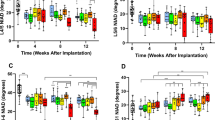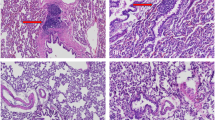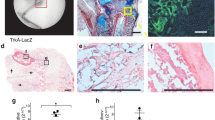Abstract
Gene therapy presents a novel approach to the treatment of challenging bone loss problems. Recombinant, osteogenic growth factors are now available to enhance bone repair, particularly in those applications related to the treatment of fracture nonunions and the enhancement of fusion of the spine. However, there is concern that a single dose of an exogenous protein will not induce an adequate osteogenic signal in many patients, particularly in those cases where there is compromise of host bone and the surrounding soft tissue. Transfer of genes encoding osteogenic proteins has the potential to overcome the delivery problems associated with the use of the proteins themselves. Bone healing is an attractive application for gene therapy, because long-term protein production is not necessary for many bone repair problems. Therefore, the development of gene therapy strategies to treat bone repair problems promises to be easier than the application of gene therapy to treat chronic diseases. The purpose of this review is to highlight the advantages, disadvantages and clinical potential of various gene therapy strategies to enhance bone repair.
This is a preview of subscription content, access via your institution
Access options
Subscribe to this journal
Receive 12 print issues and online access
$259.00 per year
only $21.58 per issue
Buy this article
- Purchase on Springer Link
- Instant access to full article PDF
Prices may be subject to local taxes which are calculated during checkout




Similar content being viewed by others
References
Arrington ED et al. Complications of iliac crest bone graft harvesting. Clin Orthop 1996: 300–309.
Banwart JC, Asher MA, Hassanein RS . Iliac crest bone graft harvest donor site morbidity. A statistical evaluation. Spine 1995; 20: 1055–1060.
Summers BN, Eisenstein SM . Donor site pain from the ilium. A complication of lumbar spine fusion. J Bone Joint Surg Br 1989; 71: 677–680.
Govender S et al. Recombinant human bone morphogenetic protein-2 for treatment of open tibial fractures: a prospective, controlled, randomized study of four hundred and fifty patients. J Bone Joint Surg 2002; 84-A: 2123–2134.
Lieberman JR, Ghivizzani SC, Evans CH . Gene transfer approaches to the healing of bone and cartilage. Mol Ther 2002; 6: 141–147.
Oakes DA, Lieberman JR . Osteoinductive applications of regional gene therapy: ex vivo gene transfer. Clin Orthop 2000; 379 (Suppl): S101–S112.
Baltzer AW et al. Genetic enhancement of fracture repair: healing of an experimental segmental defect by adenoviral transfer of the BMP-2 gene. Gene Therapy 2000; 7: 734–739.
Foley R et al. Intramarrow cytokine gene transfer by adenoviral vectors in dogs. Hum Gene Ther 1997; 8: 545–553.
Baltzer AW et al. A gene therapy approach to accelerating bone healing. Evaluation of gene expression in a New Zealand white rabbit model. Knee Surg Sports Traumatol Arthrosc 1999; 7: 197–202.
Lieberman JR et al. The effect of regional gene therapy with bone morphogenetic protein-2-producing bone-marrow cells on the repair of segmental femoral defects in rats. J Bone Joint Surg Am 1999; 81: 905–917.
Musgrave DS et al. Adenovirus-mediated direct gene therapy with bone morphogenetic protein-2 produces bone. Bone 1999; 24: 541–547.
Alden TD et al. The use of bone morphogenetic protein gene therapy in craniofacial bone repair. J Craniofac Surg 2000; 11: 24–30.
Christ M et al. Gene therapy with recombinant adenovirus vectors: evaluation of the host immune response. Immunol Lett 1997; 57: 19–25.
Molinier-Frenkel V et al. Immune response to recombinant adenovirus in humans: capsid components from viral input are targets for vector-specific cytotoxic T lymphocytes. J Virol 2000; 74: 7678–7682.
Yang Y et al. Cellular immunity to viral antigens limits E1-deleted adenoviruses for gene therapy. Proc Natl Acad Sci USA 1994; 91: 4407–4411.
Yang Y, Li Q, Ertl HC, Wilson JM . Cellular and humoral immune responses to viral antigens create barriers to lung-directed gene therapy with recombinant adenoviruses. J Virol 1995; 69: 2004–2015.
Alden TD et al. Percutaneous spinal fusion using bone morphogenetic protein-2 gene therapy. J Neurosurg 1999; 90 (Suppl): 109–114.
Alden TD et al. In vivo endochondral bone formation using a bone morphogenetic protein 2 adenoviral vector. Hum Gene Ther 1999; 10: 2245–2253.
Egermann M et al. Host immune response does not impair gene expression after local delivery of adenoviral vector. ORS 2003 Abstract book 2003.
Okubo Y et al. Osteoinduction by bone morphogenetic protein-2 via adenoviral vector under transient immunosuppression. Biochem Biophys Res Commun 2000; 267: 382–387.
Okubo Y et al. In vitro and in vivo studies of a bone morphogenetic protein-2 expressing adenoviral vector. J Bone Joint Surg Am 2000; 83-A (Suppl 1): S99–S104.
Fang J et al. Stimulation of new bone formation by direct transfer of osteogenic plasmid genes. Proc Natl Acad Sci USA 1996; 93: 5753–5758.
Bonadio J, Smiley E, Patil P, Goldstein S . Localized, direct plasmid gene delivery in vivo: prolonged therapy results in reproducible tissue regeneration. Nat Med 1999; 5: 753–759.
Viggeswarapu M et al. Adenoviral delivery of LIM mineralization protein-1 induces new-bone formation in vitro and in vivo. J Bone Joint Surg Am 2001; 83-A: 364–376.
Bruder SP, Horowitz MC, Mosca JD, Haynesworth SE . Monoclonal antibodies reactive with human osteogenic cell surface antigens. Bone 1997; 21: 225–235.
Bruder SP et al. Mesenchymal stem cells in osteobiology and applied bone regeneration. Clin Orthop 1998(Suppl): S247–S256.
Bruder SP et al. Bone regeneration by implantation of purified, culture-expanded human mesenchymal stem cells. J Orthop Res 1998; 16: 155–162.
Peng H et al. Synergistic enhancement of bone formation and healing by stem cell-expressed VEGF and bone morphogenetic protein-4. J Clin Invest 2003; 110: 751–759.
Zuk PA et al. Multilineage cells from human adipose tissue: Implications for cell-based therapies. Tissue Eng 2003; 7: 211–228.
Peterson B et al. Genetically modified stem cells derived from human adipose tissue can heal critically sized femoral defects in athymic rats. Trans ORS 2003; 28: 194.
Rutherford RB et al. Bone morphogenetic protein-transduced human fibroblasts convert to osteoblasts and form bone in vivo. Tissue Eng 2003; 8: 441–452.
Boden SD et al. Lumbar spine fusion by local gene therapy with a cDNA encoding a novel osteoinductive protein (LMP-1). Spine 1998; 23: 2486–2492.
Steinmann JC, Herkowitz HN . Pseudoarthrosis of the spine. Clin Orthop 1992; 284: 84–90.
Peterson B, Wang J, Zhang J, Lieberman JR . Genetically modified huma derived bone marrow cells for posterolateral lumbar spine fusion via gene therapy. Trans ORS 2003; 28: 425.
Li JZ et al. Osteogenesis in rats induced by a novel recombinant helper-dependent bone morphogenetic protein-9 (BMP-9) adenovirus. J Gene Med 2003; 5: 748–756.
Martinek V et al. Enhancement of tendon-bone integration of anterior cruciate ligament grafts with bone morphogenetic protein-2 gene transfer: a histological and biomechanical study. J Bone Joint Surg Am 2002; 84-A: 1123–1131.
Baltzer AW et al. Potential role of direct adenoviral gene transfer in enhancing fracture repair. Clin Orthop 2000(Suppl): S120–S125.
Mehrara BJ et al. Adenovirus-mediated gene therapy of osteoblasts in vitro and in vivo. J Bone Miner Res 1999; 14: 1290–1301.
Dempster DW et al. Anabolic actions of parathyroid hormone on bone. Endocr Rev 1993; 14: 690–709.
Peng H et al. Synergistic enhancement of bone formation and healing by stem cell-expressed VEGF and bone morphogenetic protein-4. J Clin Invest 2002; 110: 751–759.
Reddi AH . Bone and cartilage differentiation. Curr Opin Genet Dev 1994; 4: 737–744.
Reddi AH . Initiation of fracture repair by bone morphogenetic proteins. Clin Orthop 1998; 355 (Suppl): S66–S72.
Street J et al. Vascular endothelial growth factor stimulates bone repair by promoting angiogenesis and bone turnover. Proc Natl Acad Sci USA 2002; 99: 9656–9661.
Harvey BG et al. Variability of human systemic humoral immune responses to adenovirus gene transfer vectors administered to different organs. J Virol 1999; 73: 6729–6742.
Monahan PE, Samulski RJ . AAV vectors: is clinical success on the horizon? Gene Therapy 2000; 7: 24–30.
Maione D et al. An improved helper-dependent adenoviral vector allows persistent gene expression after intramuscular delivery and overcomes preexisting immunity to adenovirus. Proc Natl Acad Sci USA 2001; 98: 5986–5991.
Lollo CP, Banaszczyk MG, Chiou HC . Obstacles and advances in non-viral gene delivery. Curr Opin Mol Ther 2000; 2: 136–142.
Goldstein SA . In vivo nonviral delivery factors to enhance bone repair. Clin Orthop 2000(Suppl): S113–S119.
Spector JA et al. Expression of adenovirally delivered gene products in healing osseous tissues. Ann Plast Surg 2000; 44: 522–528.
Helm GA et al. Use of bone morphogenetic protein-9 gene therapy to induce spinal arthrodesis in the rodent. J Neurosurg 2000; 92 (Suppl): 191–196.
Boden SD, Kang J, Sandhu H, Heller JG . Use of recombinant human bone morphogenetic protein-2 to achieve posterolateral lumbar spine fusion in humans: a prospective, randomized clinical pilot trial: 2002 Volvo Award in clinical studies. Spine 2002; 27: 2662–2673.
Friedlaender GE et al. Osteogenic protein-1 (bone morphogenetic protein-7) in the treatment of tibial nonunions. J Bone Joint Surg Am 2001; 83-A (Suppl 1): S151–S158.
Wang JC et al. The effect of regional gene therapy with bone morphogenetic protein-2 producing bone marrow cells on spinal fusion in rats. J Bone Joint Surg Am 2003; 85: 905–911.
Author information
Authors and Affiliations
Rights and permissions
About this article
Cite this article
Baltzer, A., Lieberman, J. Regional gene therapy to enhance bone repair. Gene Ther 11, 344–350 (2004). https://doi.org/10.1038/sj.gt.3302195
Published:
Issue Date:
DOI: https://doi.org/10.1038/sj.gt.3302195
Keywords
This article is cited by
-
Induction of bone formation in abdominal implants constituted by collagen sponges embedded with plant-based human transforming growth factor family proteins in ectopic dog model
Journal of Experimental Orthopaedics (2014)
-
Ecological Models for Gene Therapy. II. Niche Construction, Nongenetic Inheritance, and Ecosystem Perturbations
Biological Theory (2014)
-
Implants in bone: Part I. A current overview about tissue response, surface modifications and future perspectives
Oral and Maxillofacial Surgery (2014)
-
“Same Day” Ex-vivo Regional Gene Therapy: A Novel Strategy to Enhance Bone Repair
Molecular Therapy (2011)



